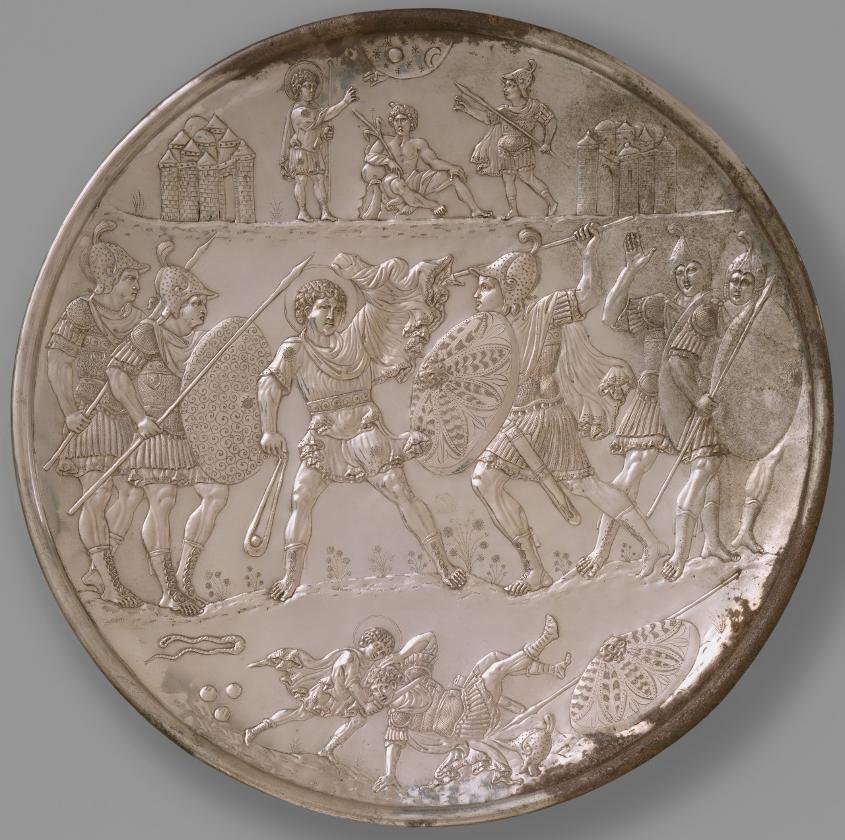
Try Amazon Audible Premium Plus and Get Up to Two Free Audiobooks
Byzantine Plates - Herakleios, early 7th century
Battle of David and Goliath

A larger image of the Battle of David and Goliath - Byzantine Plates - Herakleios, early 7th century


This is the largest plate in the set. During the war, it is said that Heraclius fought the Persian general Razatis in single-handed combat, an event which is perhaps evoked in the depiction of David's defeat of Goliath. Imperial imagery is present also on the middle-sized plates, where ceremonial scenes from the biblical king's life are set before the arcade of a palace. Their style is a conscious reference to classical art.
Made in Constantinople
Dimensions: Overall: 49.4 x 6.6 cm, 5780g. Foot: 20.6 x 1.9 cm
Source: Metropolitan Museum of New York Accession Number: 17.190.396
Referenced on p.33, EH - 071 - The Great Islamic Conquests AD 632-750 by David Nicolle
One of the most famous pieces of early 7th century Byzantine metalwork, the 'David Plates', found at Lampousa in Cyprus and probably made to celebrate the Emperor Heraclius' victory over the Sassanians before his catastrophic defeats by the Muslims. The two figures on the right are Philistine warriors in the service of the Byzantine Army and are shown wearing stylised Romano-Byzantine mail armour of the period. However their helmets are in the style of late Sassanian Iranian troops.